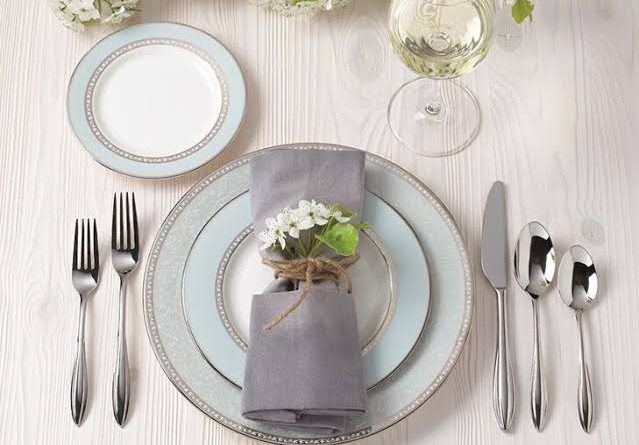Table Manners Guide: Master The Art Of Fine Dining!
Table manners aren’t meant just for the royals! Be it with family or and office gatherings,formal or informal, knowing basic table manners never fails to leave a good impression. Moreover, it doesn’t harm to learn something new which you can incorporate in your daily life! Here’s our “ultimate table manners guide” for you!
An Ultimate Table Manners Guide
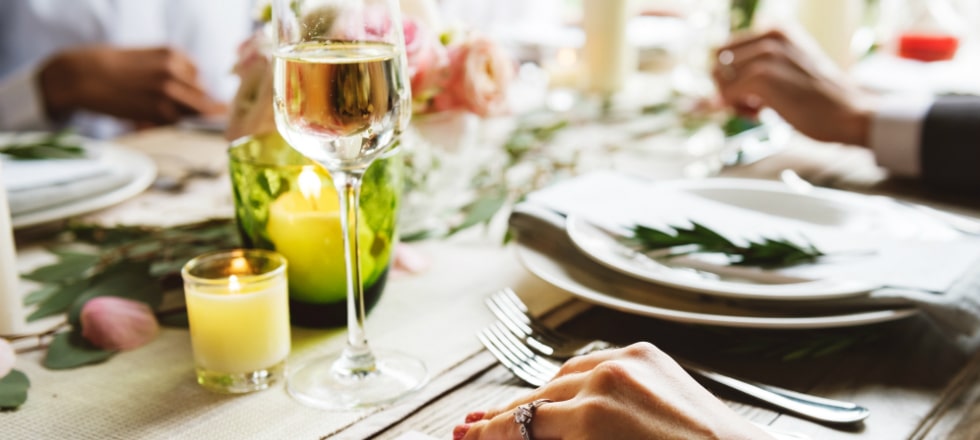
Who doesn’t like fine dining?! Everyone loves going to fancy restaurants, getting pampered with classy service, and eating fancy foods! However, some might feel out of place and awkward when faced with more than one knife, spoon and plate! Fear not, we are here for the rescue! It’s at time like these when table manners come handy. Here’s a short, simple and ultimate “table manners guide” from which you can master the art of fine dining!
Where to sit?
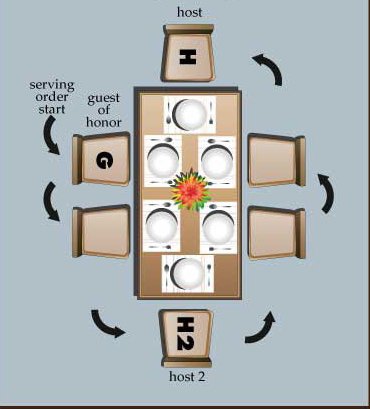
Well in a formal dinner, place cards are generally put to allocate seats. However, if it’s an informal dinner, always wait for the host to show you your seat. It’s not considered mannerly to sit at any seat you please.
The Napkin and how to use it?
There are specific protocols to be followed for using the napkins as well!
At informal meals, place the napkin in your lap immediately upon seating. Whereas during formal occasions, wait for the hostess to remove her napkin from the table and unfold it in her lap, before unfolding your napkin.
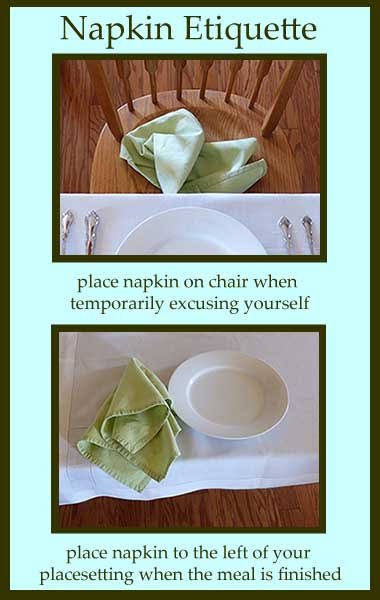
- Place the napkin in your lap upon seating.
- When leaving the table temporarily, put the napkin on your chair.
- At the meal’s end, fold your napkin and place it to the left of your place setting.
The main purpose of a napkin is to wipe off food from your mouth. If you need to wipe your mouth, wrap a section of the napkin around your index finger and remove the offending article.
Handling The Cutlery
One might think there’s a lot of cutlery for one meal on the table! But each has its own use. Your regular hold on fork and knife might not be correct when it comes to table manners. Read on to find how to hold the cutlery correctly.

Info alert: This style of holding is known as continental style and is most prevalent.
- Always hold your fork in your left hand, tines downward.
- Also, hold your knife in your right hand, an inch or two above the plate.
- Extend your index finger along the top of the blade.
- Use your fork to spear and lift food to your mouth.
Table Arrangement
It’s quite natural for one to get overwhelmed after seeing the arrangement of the cutlery… multiple forks, spoons, and glasses can get confusing! Fikar not! This rule should do the trick.
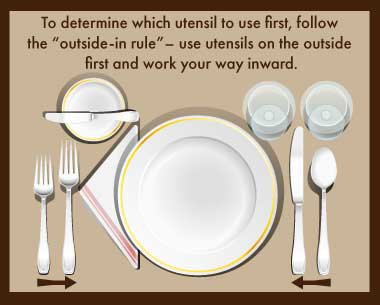
When presented with an elaborate Table arrangement, use the outside-in rule. According to this rule, use utensils on the outside first and working your way inward. So, if you are served a salad first, use the fork set to the far left of your plate.
- Your water glass is above the knife in your place setting and your bread plate is to the left.
- Moreover, to remember which bread plate and glass belongs to you, use “b” and “d”.
- The “b” formed by your left hand’s index finger and thumb is for “bread” (your bread plate is always at the left of your place setting).
- The “d” formed by your right hand is for “drink” (your drinking glasses are always at the right of your place setting).
It’s getting easy right?! Practice and you’ll soon get the hang of it! Now that we have cleared handling cutlery, let’s move on to food!
When And How To Eat?
- Firstly, when at formal dinners, it’s imperative that you start after your host, or after everyone has been served.
- Secondly, at informal dinners it’s advised to start after everyone is served.
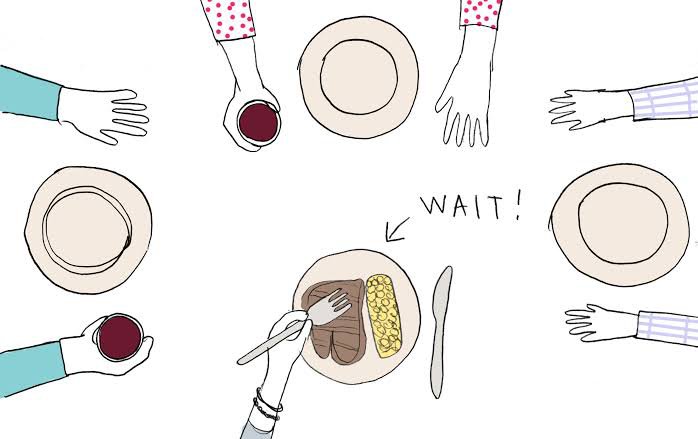
So the next time you go for dinner, make sure you check everyone’s plate before starting to eat! Furthermore, dinners are usually social events and it’s important to follow certain conventions.
- Eat small portions of food (especially meats).
- Look at the speed of your host and adjust your eating speed accordingly. You don’t want to be the last one to finish nor the first!
- Lastly, never slurp your soup!
How to pass the food?
Pass to the right (if the item is not being passed to a specific person). One diner either holds the dish as the next such takes some food, or he hands it to the person, who then serves herself. Moreover, any heavy or awkward dishes are put on the table with each pass.
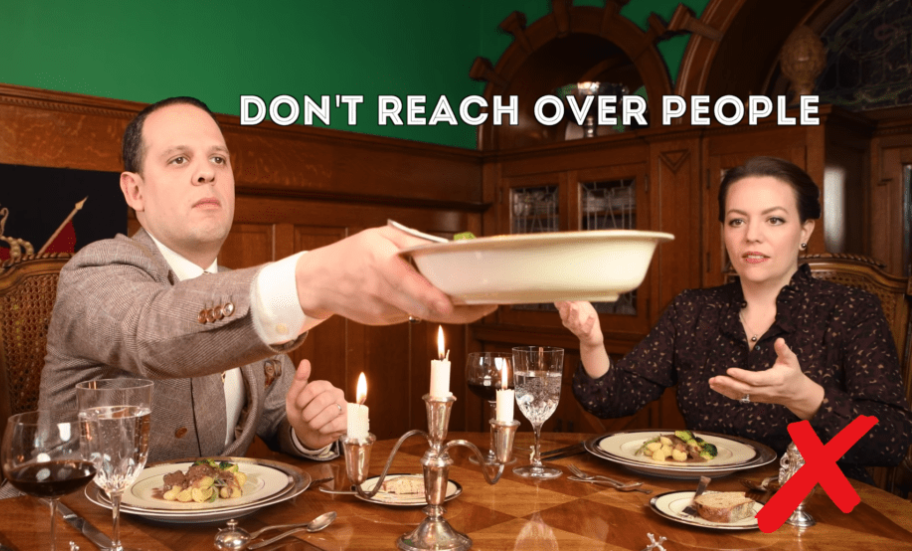
P.S- Never pass the food across the table.
Furthermore, the passing of salt and pepper is an essential part of table manners. Always pass the salt and pepper together. We don’t want the other guest looking for its bichda hua bhai!
How to leave knife and fork while taking a break or ending meals?
One of the most frequently used table manners is placing the fork and knife while on a break. A person having proper table manners will always say, “excuse me”, or “I’ll be right back” before leaving the company. Do not leave the table before your host!
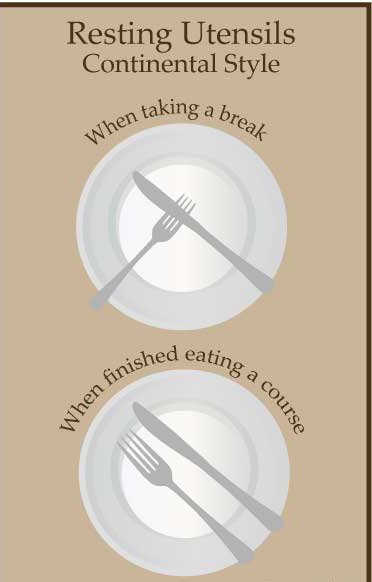
When you pause to take a sip of your beverage or to speak with someone, rest your utensils in this continental style: Place your knife and fork on your plate near the center, slightly angled in an inverted V and with the tips of the knife and fork pointing toward each other.
When each course is finished: Place the knife and fork parallel with the handles in the four o’clock position on the right rim of the plate.
This is an important part of table manners as it shows your knowledge and awareness of the custom. Now that the food is done, it’s time to clear the table!
Clearing the Table
After the meal is done, the host will generally signal by gently putting the napkin on the table requesting the guests to go to another room for coffee or drinks. This is when dinner ends.
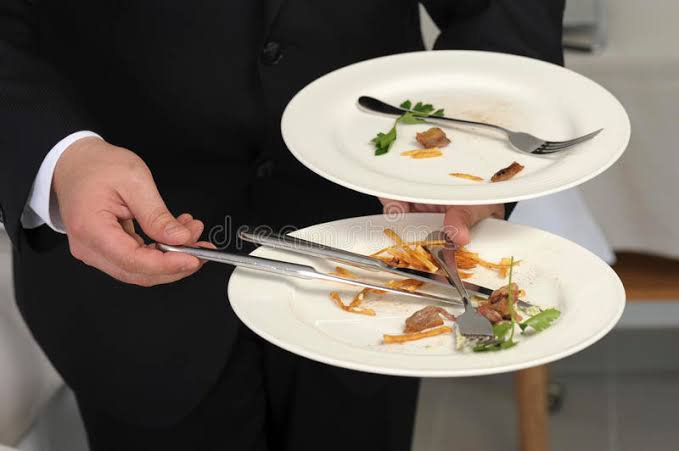
- If the meal is formal, plates will be removed by the staff.
- At informal meals, the hostess will probably clear the plates, possibly with one or two guests helping.
- At a family meal, members clear their own plates.
- If the meal is formal, plates will be removed by the staff.
- At informal meals, the hostess will probably clear the plates, possibly with one or two guests helping.
- At a family meal, members clear their own plates.
Also: Don’t forget to be cordial but quick while saying goodbyes. Leave while others do and don’t laze around. It’s best not to waste your host’s time bye lengthy goodbyes (cos there’s a whole lot of dishes to be done!).
With this ultimate table manners guide, you’ll sure float through any formal/informal dinner! Practice makes one perfect. Try to inculcate such table manners in your daily dinner routine and you should be good to go!
If you have any more questions, do let us know in the comments below. Till then, happy dinners!

